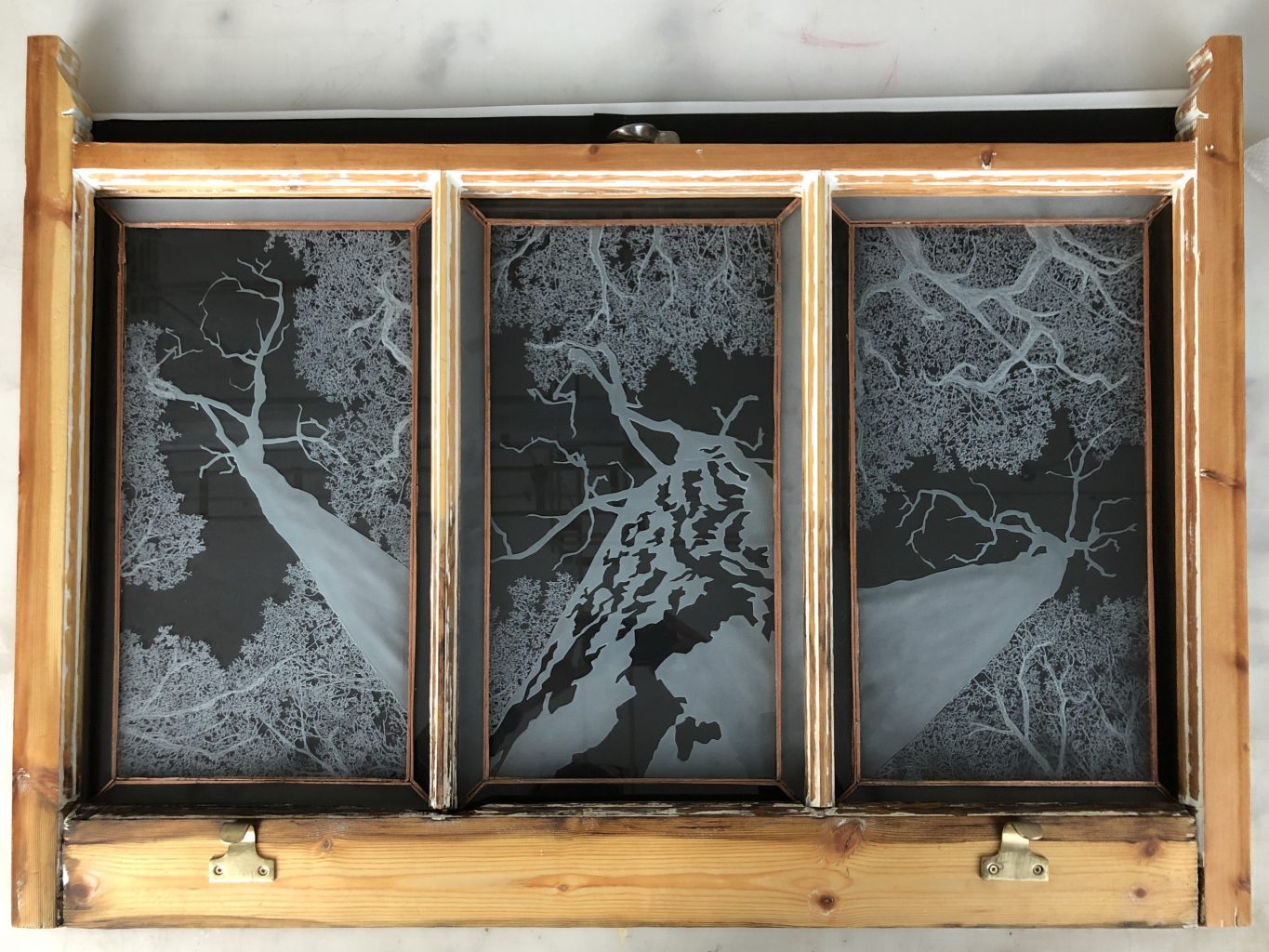
The Foundation Diploma Art & Design is a diagnostic year of experimentation during which students are encouraged to test different materials and processes to find a creative discipline they want to explore further in Higher Education and in their practice. 2020/21 Foundation student Lorelei Bere, has recently completed a piece called ‘Reclaimed Wood’, which is a great example of experimentation, reflection and creative problem solving to find a workable and effective solution.
Most techniques and tools involved in completing this complex project were completely new to Lorelei, and she was supported at every step by the Art School’s specialist workshops and the Technicians that manage them: Foundation Technician, Emma Simpson; Wood Workshop Technician, David MacDiarmid; Glass Workshop Technician, Anne Petters.
Lorelei recorded the making process of ‘Reclaimed Wood’ through a series of photographs, and has kindly given us permission to share them in this blog, describing how she transformed a discarded, rotten sash window into a beautiful artwork. See more of Lorelei’s work: @loreleibere
‘RECLAIMED WOOD’
‘Reclaimed Wood’ explores our love and appreciation of trees and their materials. The piece comprises an original Georgian sash window, found on the street, which Lorelei refurbished and fitted with new glass panes that she etched and sandblasted with three images of a worm’s eye view of trees.
Lorelei says, “‘Reclaimed Wood’ is an ode to trees in which I considered both our dependency on them for all we need – shelter, food and oxygen – as well as the fact that they will always outlast us and have seen it all. It also points to the fact that our appreciation for nature has ironically grown since we have all been forced to sit inside for almost a year and observe it through our windows.”
Lorelei’s work was inspired by walking through her local parks and woodland during Lockdown where she captured the beauty of the trees in a series of photography. When she found the discarded wood-framed window, it seemed the ideal medium for her piece. “I have really appreciated the time to stop and appreciate nature even more so than usual, and have recognised that to be a commonly held feeling. I also knew I wanted to make the most of the Art School’s workshops – especially the glass workshop, which I had been excited by when I went on a tour of the facilities – and so when I found an old Georgian sash window on the street, the two thoughts married together quite naturally.”
THE MAKING PROCESS
Having found the discarded Georgian window frame, Lorelei printed her tree photographs onto acetate and experimented with different compositions to find the effect she wanted to achieve.
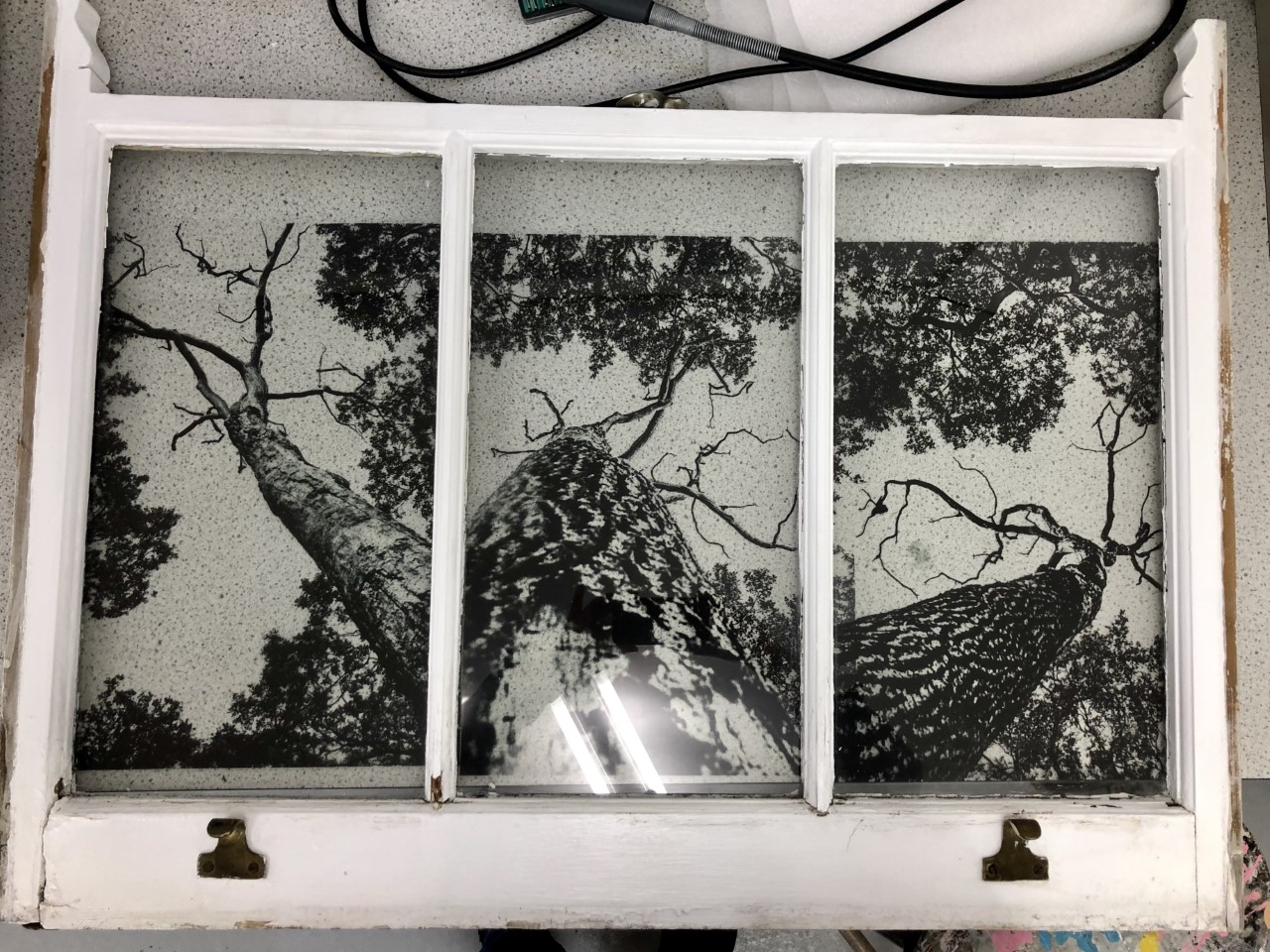
Once she had decided which images to use, her next task was to carefully remove the glass panes so she could etch the images onto them. During this delicate process the glass became compromised and replacement glass needed to be cut to size – so the original panes had to be taken out to make way for the new.
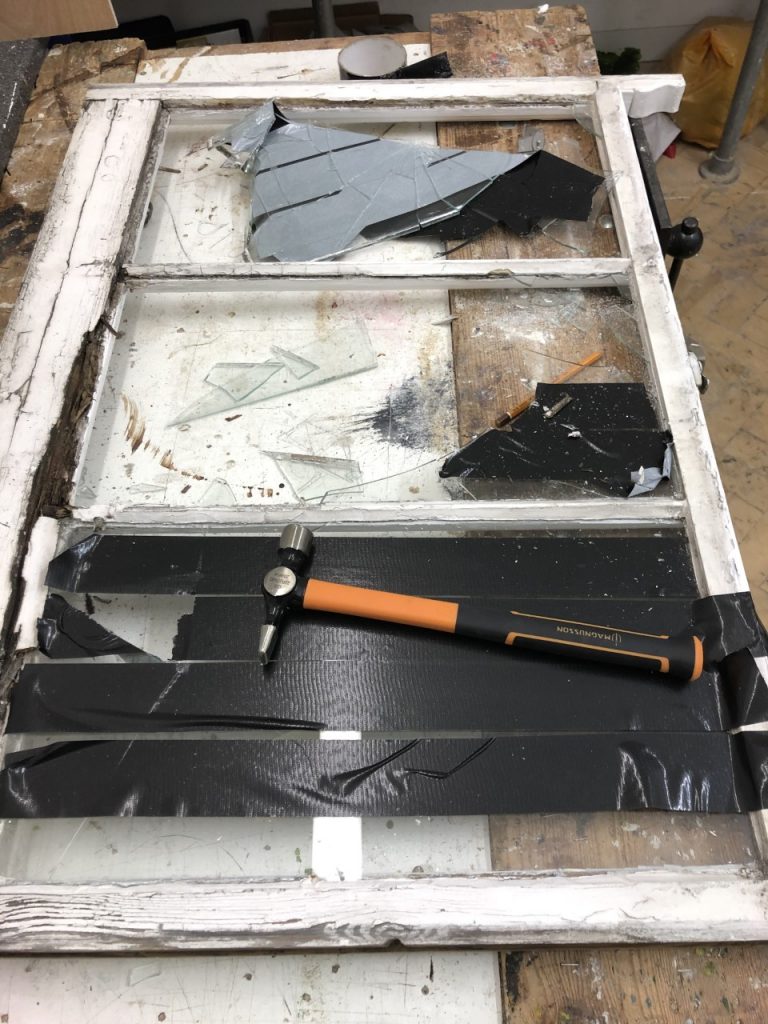
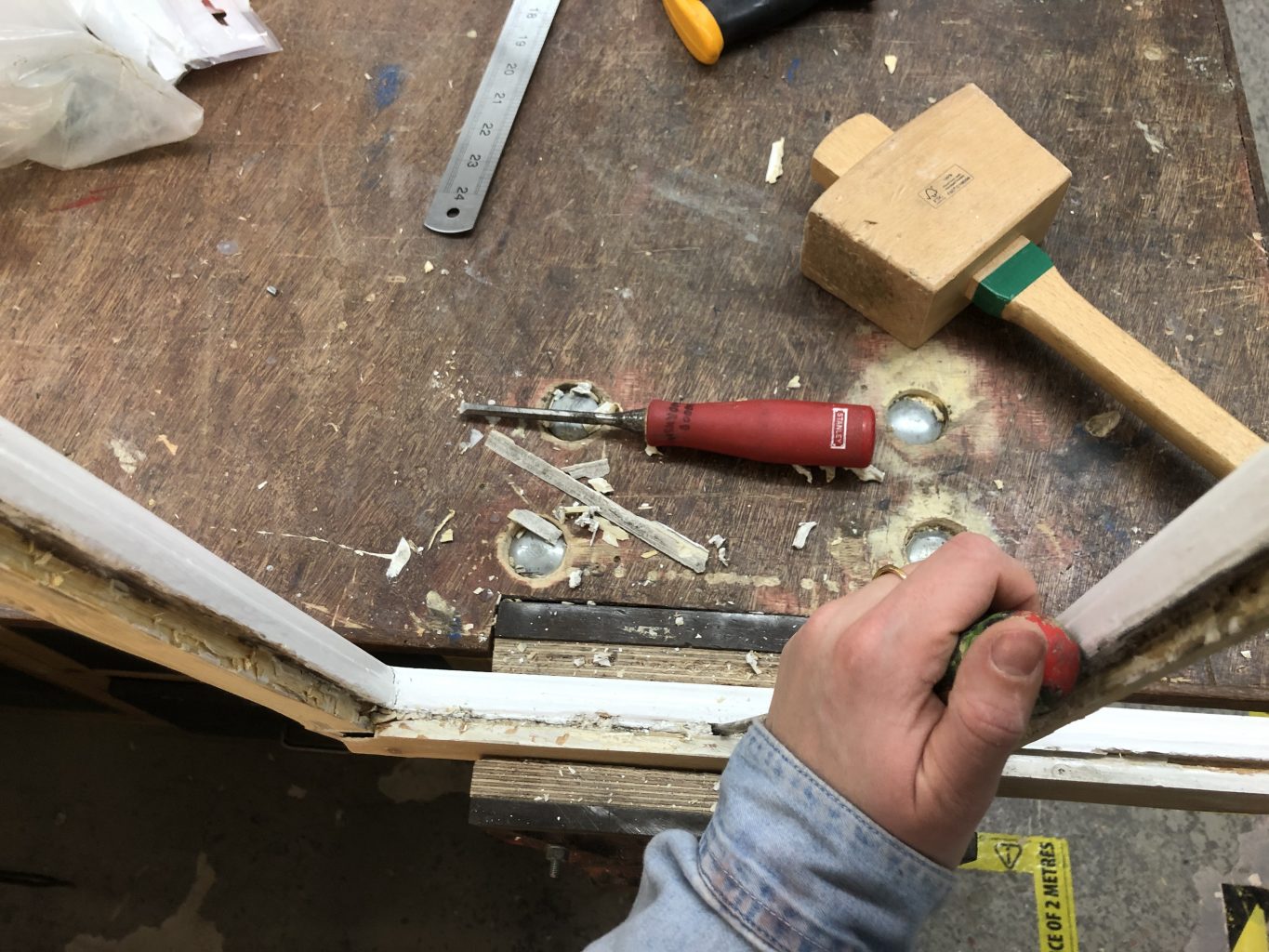
When the glass was fully and safely removed, Lorelei was supported in sanding the wooden frames using a large electric sander and then a small Dremel sander for the detail work.
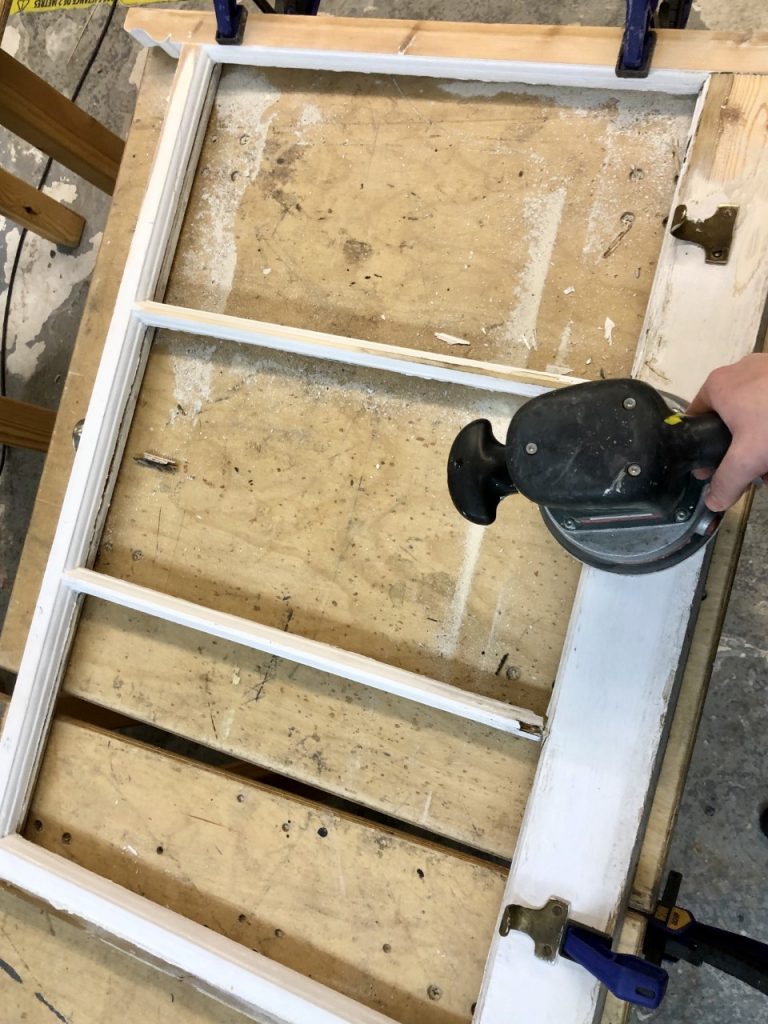
The next challenge arose when the new glass panels Lorelei had cut were too small for the frames. With the support of the David MacDiarmid in the Wood Workshop, she decided to reduce the size of the frame so it would house the panels securely.
To engrave her tree images into the new glass panels, Lorelei sandblasted the back of the panels, creating the effect of depth in the trunks of the trees. Using a Dremel mini drill with a pointed tip, she etched into the front of the glass to make the detail in the leaves.
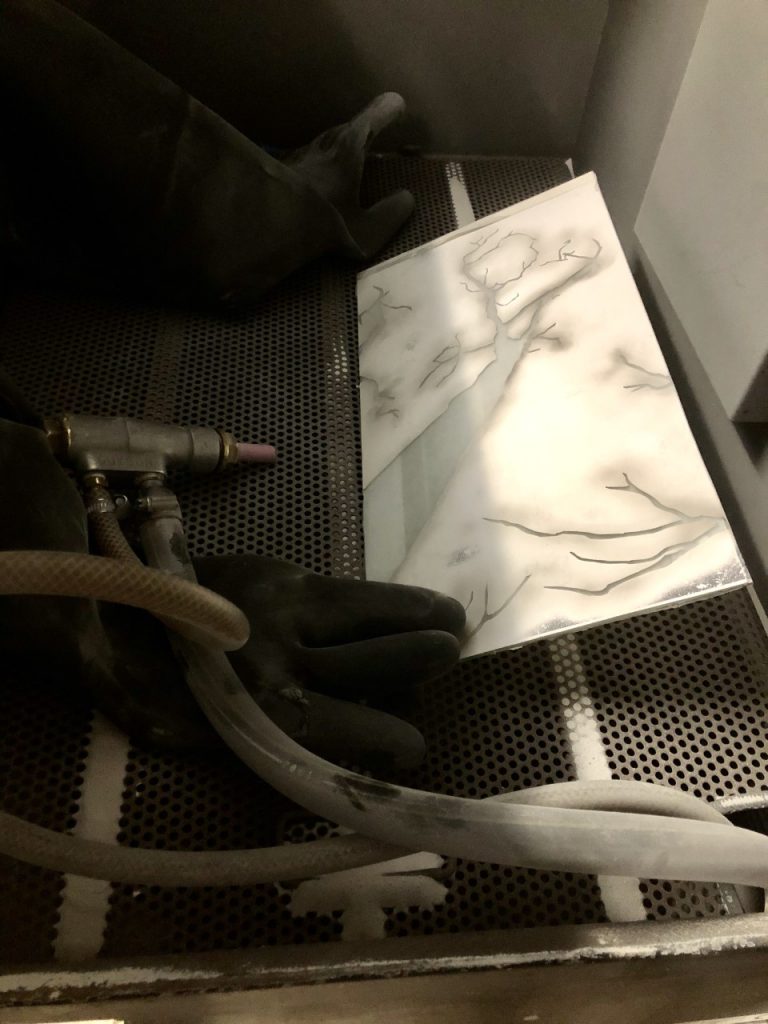
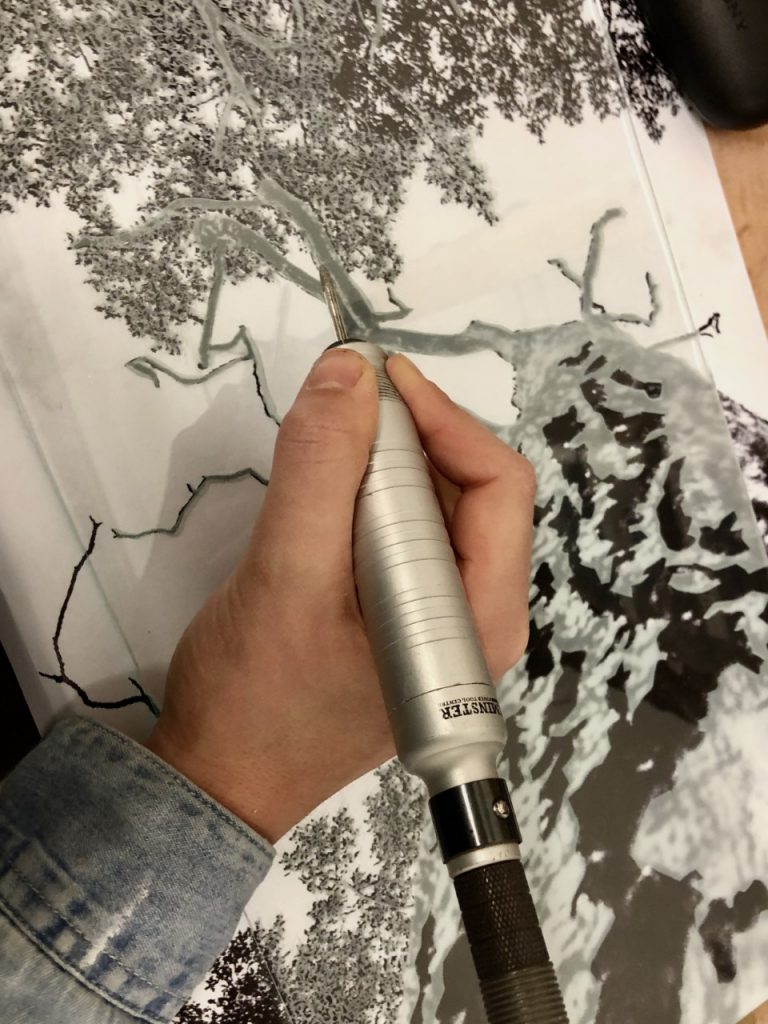
Once the main panels were etched, Lorelei created glass borders for them. She cut the glass to size and sandblasted alternating pieces so they were frosted. To attach the borders to the central panes of glass, she attached copper tape to the edges on both sides of the panes, and soldered them together. Finally she polished the copper with tiny clumps of wire wool.
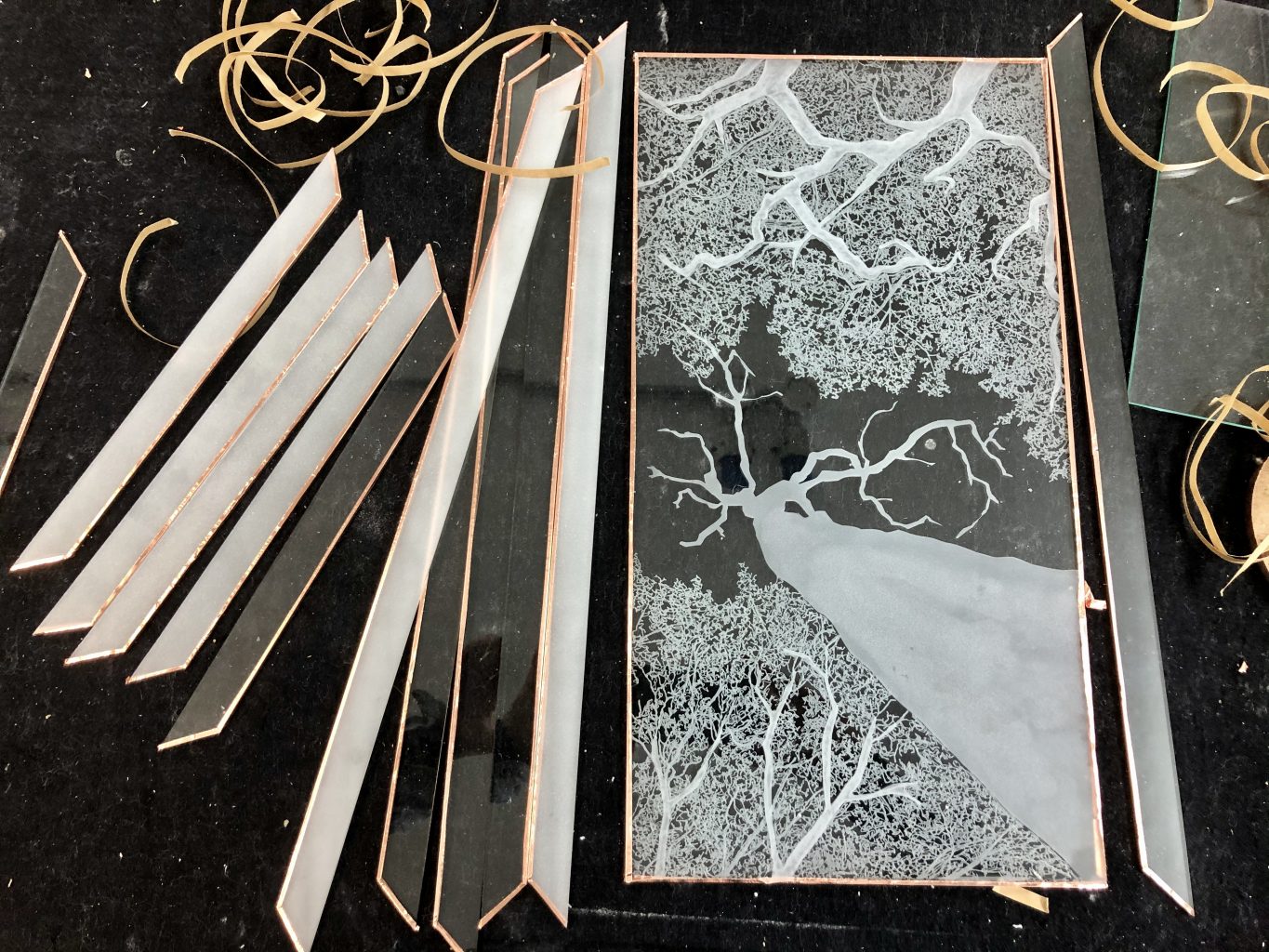
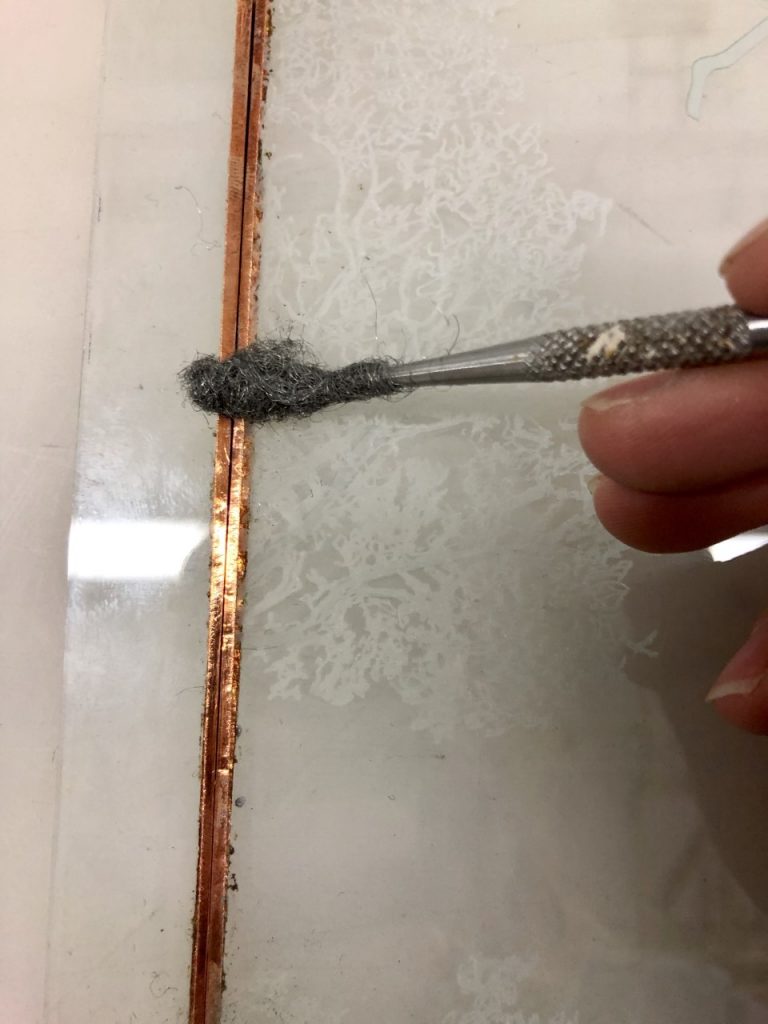
Because of the deteriorated state of the Georgian frame, Lorelei had to fix the rotten wood to make it sturdy enough to hold the new panes, and she wanted to achieve this without adding any synthetic materials. She explained, “I wanted the rot to be part of the aesthetic, symbolising the natural, aging elements of the piece, so I didn’t fill it up with two-part filler or putty and instead had to very carefully fit the panes of glass using just the wood, a couple of nails and a framing tool!”
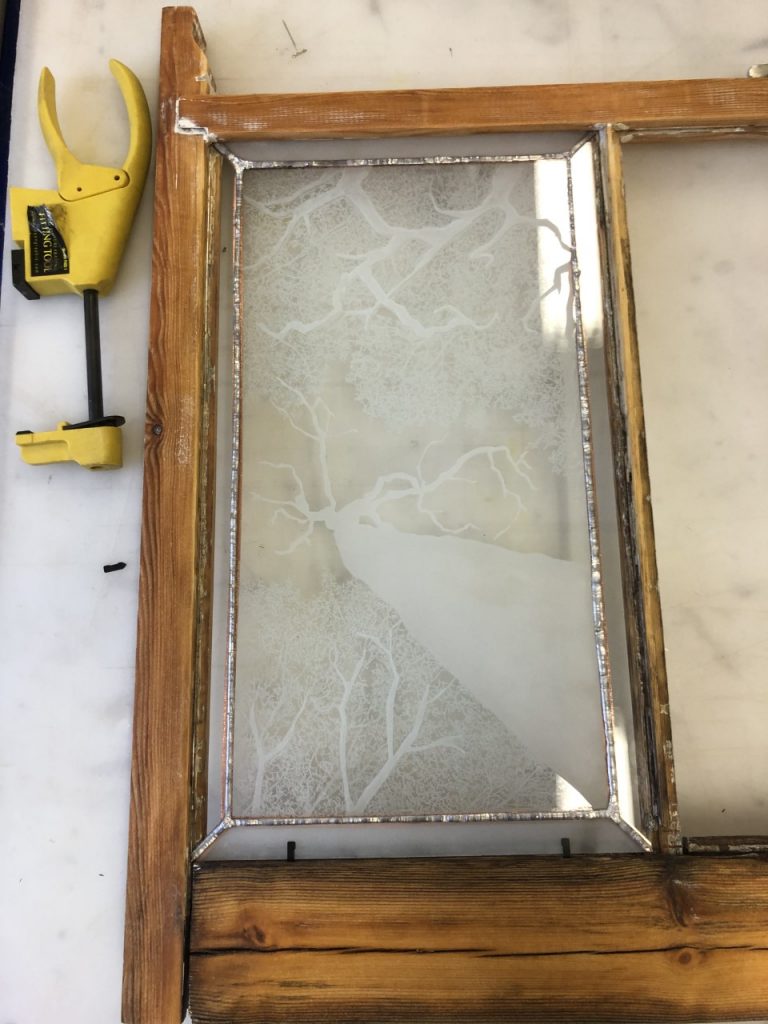
And ‘Reclaimed Wood’ was finished! The ephemeral beauty of the etched glass contrasts with the natural, eroded state of the original wooden frames, both elements reflecting the artist’s appreciation of the significance and importance of trees – the materials they give us, their majestic aesthetic and their centrality in the natural world.
Commenting on the steep learning curve she followed whilst making this piece, Lorelei noted, ” …there are certainly elements from this project that I have rolled into my current one, such as the focus on light. I have also learnt so much about using myriad tools and techniques that I will definitely take with me throughout my future art career!”
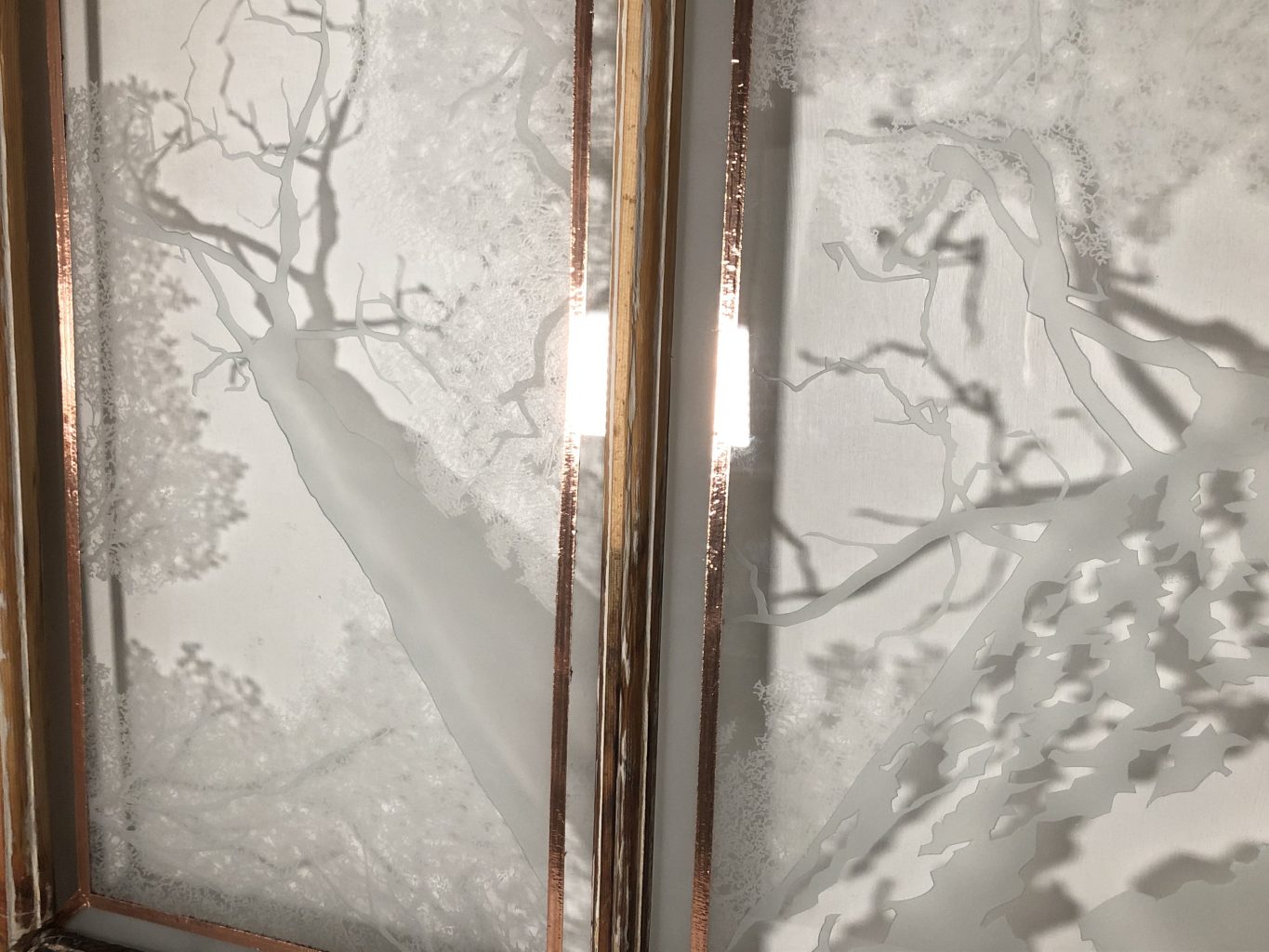
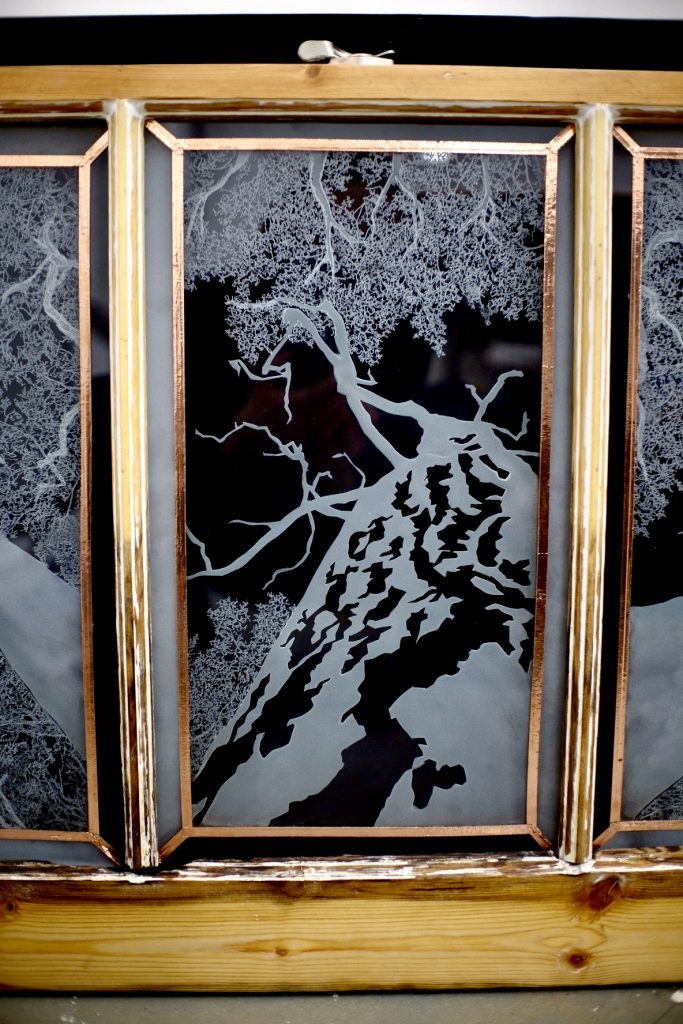

Photos courtesy of Lorelei Bere @Loreleibere


